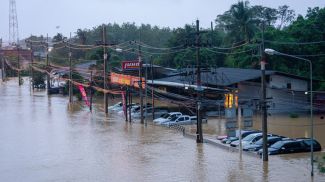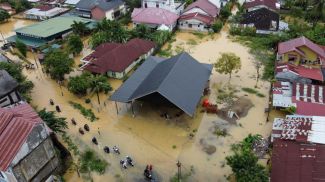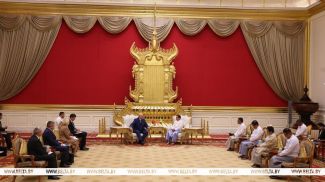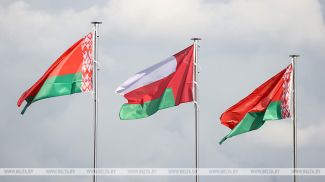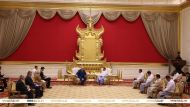SMOLEVICHI DISTRICT, 16 August (BelTA) – Belarus' genetic resource bank currently holds 90,000 samples, including 46,000 samples of seeds. Belarusian President Aleksandr Lukashenko was briefed on the gene bank as he inspected the selection and seed complex of the Scientific and Practical Center for Arable Farming of the National Academy of Sciences of Belarus (NASB), BelTA has learned.
"The gene bank is very important. I say this for journalists to understand," Aleksandr Lukashenko said. He recalled the story of how people in the besieged Leningrad, starving and dying, saved a similar bank of genetic resources, without taking a single grain from it.
"This is to illustrate the importance of it. People died there, but saved the gene bank," Aleksandr Lukashenko stressed.
After the collapse of the Soviet Union, Belarus not only preserved but also developed the domestic seed production traditions. The country has also created its own bank of genetic resources, which is currently highly valued in the world and is unique in the CIS. This gene bank holds the seeds of virtually everything that grows in Belarus: not only crops, but even weeds, forest species. All this is stored for future generations, to whom this genetic material may well prove useful.
“This is our ‘gold reserve' in the plant industry,” the head of state said.
Fyodor Privalov, Director General of the Scientific and Research Center for Arable Farming, said that while similar banks across the globe have been developed for hundreds of years, Belarus has set up its gene bank in a relatively short time. Moreover, the work of domestic scientists received the highest assessment at the world level. For example, the Belarusian variety of wheat Kapylianka was recognized as unique and was put in the planetary storage in the ice on Spitsbergen Island, where the best samples from all over the planet are stored.
However, such gene banks are focused not only on future generations. They make up the basis for scientists of the current generation to continue their selection work.
The Scientific and Practical Center for Arable Farming of the National Academy of Sciences of Belarus uses its seeds to sow 80% of the country's arable areas. All registered varieties of the center successfully compete with the best foreign varieties and have high yields and product quality: more than 100 centners per hectare in cereals, 60 centners per hectare in colza, up to 50 centners per hectare in leguminous crops. Due to recent sanctions, demand from the Russian partners has significantly increased. Russia has used Belarusian seeds to plant some 3 million hectares of grain crops and 2 million hectares of colza. Seeds are supplied to 37 regions of Russia.




